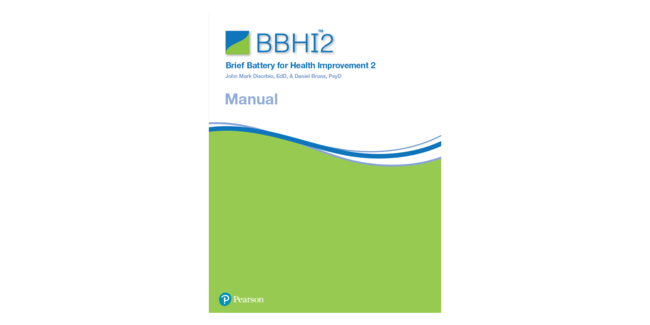A brief diagnostic tool well-suited for initial intake and outcomes measurement
Brief Battery for Health Improvement 2
BBHI 2
A brief diagnostic tool well-suited for initial intake and outcomes measurementChoose from our formats
Test forms & reports
Booklets, record forms, answer sheets, report usages & subscriptions
2 options
Support materials
Manuals, stimulus books, replacement items & other materials
1 option
All products
All tests and materials offered for BBHI 2
3 options
